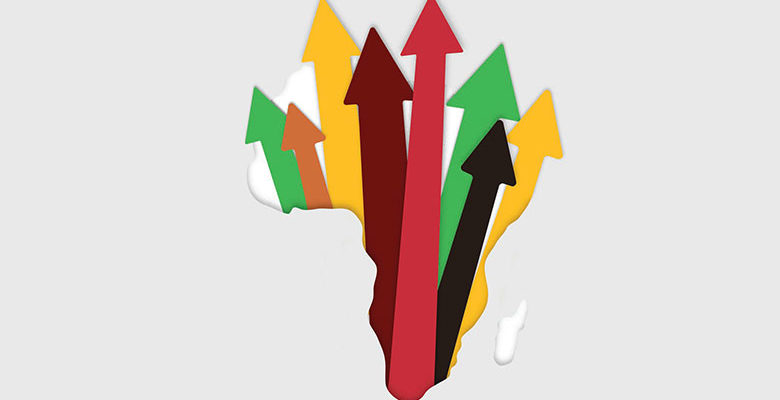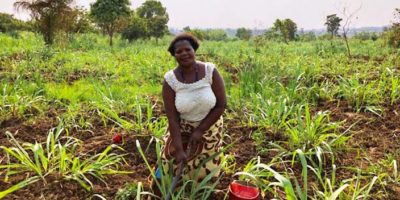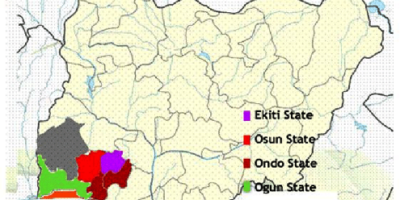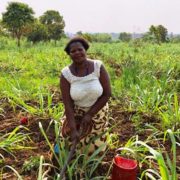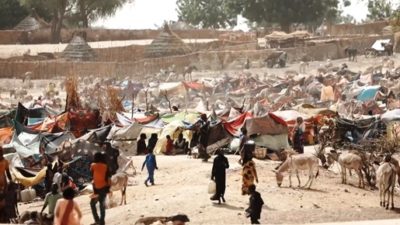2023 Prosperity Index shows on-going deterioration in safety and security as well as fragile political institutions holding back prosperity in Sub-Saharan Africa
The 2023 Legatum Prosperity Index was launched on 28 February 2023 in London. At the launch, the Rt Hon Kemi Badenoch, Secretary of State for Business and International Trade, discussed the importance of international trade, saying: “Free and fair trade is what global prosperity and security are based on. And it is not an empty platitude. Trade means treating companies and countries equally and making sure that the rules are abided by. That is what’s going to work for the UK and for the rest of the world.”
Topline:
- The Legatum Institute’s 2023 Prosperity Index reveals that global “prosperity has plateaued for the third year running” as a result of weakening institutions and economies.
- The Prosperity Index shows that Prosperity in Saharan Africa has continued to grow, but that it is further behind the rest of the world than it was 10 years ago. Out of 49 countries, 39 saw prosperity grow during that time.
- While basic needs in health, education and living conditions are being met more than ever, leading to significant improvements in Sub-Saharan Africa, the lack of progress in core political and economic institutions are holding back the region’s prosperity. Sub-Saharan Africa remains the lowest-ranked region for prosperity, and is the worst-performing region in 8 out of 12 pillars.
Regional Highlights
- Overall, the region saw an improvement in its prosperity in the last 10 years. It was led by improvements in Health, Education and Living Conditions. In particular, Sub-Saharan Africa saw the greatest progress in Infrastructure & Market Access with Guinea, Botswana and Gabon experiencing largest improvements in the pillar in the region. Some improvements in Sub-Saharan Africa include:
- The percentage of people living on less than $1.90 a day has fallen from 47.2% to 36.4%
- Under-5 mortality has fallen from 98 deaths per 1,000 children to 70.6 deaths
- Primary completion rates have risen from 56% to 65%
- It saw the greatest deterioration in Safety and Security out of all regions, with Mali, South Sudan and Cameroon deteriorating at the greatest rate. Particularly, it is the increase in Terrorism and Civil Conflict that led the decline in the pillar. For example:
- Conflict deaths have risen three-fold to 24,000
- Deaths from terrorism have risen from 800 to 9000
- 36 out of 59 African countries saw a deterioration in freedom of assembly and association
- The region is also weak economically, for example:
- Government debt has risen from 32% to 62% of GDP on average
- Youth unemployment has risen from 12.1% to 15.4%
- Annual GDP per capita growth has fallen from 3.1% to 0.3%
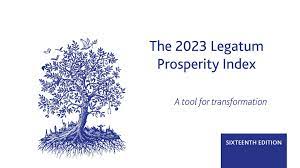

Country Highlights:
- Mauritius (47th) ranks most highly for overall prosperity in Sub-Saharan Africa.
- Côte d’Ivoire (120th) has seen its prosperity improve more than any other nation in the past decade. The country’s Governance improved at the highest rate globally in this period. Experiencing a 47-rank improvement, a policy of reconciliation has been maintained by the current administration following the armed conflict that lasted until 2011. This has seen government effectiveness rise 101 places from 165th to 64th in the world.
- South Sudan (167th) is least prosperous country in the region and in the world.
- Mali (151st) saw its prosperity deteriorate at the greatest rate in the region for the past 10 years. Led by a decline in Safety and Security following political instability and a decade-long conflict, Mali suffered from 326 terrorism-related injuries in 2020, which increased from 0 in 2010. Mali’s ranking for Safety and Security fell 91 places to 158th, placing the country among the worst countries globally.
Regional rankings (global rank)
| 1. Mauritius (47th) | 26. Burkina Faso (135th) |
| 2. Seychelles (51st) | 27. Madagascar (137th) |
| 3. South Africa (75th) | 28. Liberia (138th) |
| 4. Cabo Verde (80th) | 29. Zimbabwe (139th) |
| 5. Botswana (83rd) | 30. Guinea (141st) |
| 6. São Tomé and Príncipe (87th) | 31. Nigeria (142nd) |
| 7. Namibia (90th) | 32. Sierra Leone (144th) |
| 8. Ghana (98th) | 33. Cameroon (147th) |
| 9. Senegal (102nd) | 34. Congo (148th) |
| 10. Kenya (108th) | 35. Guinea-Bissau (149th) |
| 11. Rwanda (111th) | 36. Mozambique (150th) |
| 12. The Gambia (116th) | 37. Mali (151st) |
| 13. Tanzania (117th) | 38. Niger (152nd) |
| 14. Gabon (119th) | 39. Ethiopia (153rd) |
| 15. Côte d’Ivoire (120th) | 40. Mauritania (154th) |
| 16. Djibouti (122nd) | 41. Angola (155th) |
| 17. Benin (123rd) | 42. Burundi (157th) |
| 18. Malawi (125th) | 43. Sudan (158th) |
| 19. Zambia (127th) | 44. Eritrea (160th) |
| 20. Comoros (128th) | 45. Dem Rep Congo (161st) |
| 21. Uganda (129th) | 46. Chad (162nd) |
| 22. Equatorial Guinea (131st) | 47. Somalia (163rd) |
| 23. Lesotho (132nd) | 48. Cent African Rep (165th) |
| 24. Togo (133rd) | 49. South Sudan (167th) |
| 25. Eswatini (134th) |
Global Fact sheet
Top and bottom 10:
| Top 10 ranking countries for overall prosperity | Bottom 10 ranking countries for overall prosperity | ||
| 1 | Denmark | 158 | Sudan |
| 2 | Sweden | 159 | Syria |
| 3 | Norway | 160 | Eritrea |
| 4 | Finland | 161 | Democratic Republic of Congo |
| 5 | Switzerland | 162 | Chad |
| 6 | Netherlands | 163 | Somalia |
| 7 | Luxembourg | 164 | Afghanistan |
| 8 | Iceland | 165 | Central African Republic |
| 9 | Germany | 166 | Yemen |
| 10 | New Zealand | 167 | South Sudan |
Top in each region:
- Western Europe: Denmark (1st globally)
- East Asia and Pacific: New Zealand (10th globally)
- North America: Canada (13th globally)
- Eastern Europe: Estonia (21st globally)
- Middle East and North Africa: Israel (33rd globally)
- Latin America and Caribbean: Chile (36th globally)
- Sub-Saharan Africa: Mauritius (47th globally)
- Central and South Asia: Kazakhstan (69th globally)
Most promising trend: Basic needs in health, education and living conditions are being met more than ever.
For example:
- The percentage of people living on less than $5.50 a day has fallen globally from 57% to 47% globally and has halved in East Asia and the Pacific from 56% to 28%.
- The percentage of children completing lower secondary school has risen from 74% to 80%. In Central and South Asia, it has risen from 68% to 79%.
- The mortality rate for children under five has fallen from 37 deaths to 26 deaths per 1,000 children. In Sub-Saharan Africa it has fallen from 98 deaths to 71 deaths per 1,000 children
The most concerning trend: Many countries, including many fragile democracies, have deteriorating civil liberties
Notably:
- Executive Constraints have deteriorated in every region, other than Western Europe, and the level to which executive powers are effectively limited by the judiciary and legislature has decreased.
- Over the last decade, Personal Freedoms have deteriorated in as many as 108 countries
- Hong Kong has fallen from 47th for Personal Freedom to 98th over the decade.
- In the element of political diversity and media perspectives, India has fallen from 3rd to 89th in the last 10 years.
- On the other hand, social capital has been increasing around the world, with Eastern Europe improving the most in the last decade, from 41% to 74%.
Other concerning trends:
While the world’s least prosperous countries are improving, they are not catching up with the rest of the world.
For example:
- In 6 out of 12 pillars of the Prosperity Index, the bottom 40 countries have deteriorated, while, on average, the rest of the world has improved. While the group saw improvement in some areas, the progress was not fast enough to catch up to the rest of the world.
- Two-sided conflicts deaths rise from 23,000 to 86,000.
- GDP per capita growth fall from 2.0% to -0.1%.
- The scope of their trade deals increased from 8% to only 12% of the global economy (while the top 40 have increased their trade deal access to foreign markets for goods from 31% of the global economy to 45%).
There are long term weaknesses in the global economy, including declining productivity and rising unemployment
For example:
- There has been a long-term slowdown in productivity around the world, and, apart from in Asia, the countries at the bottom of the Index have not caught up with the rest of the world in productivity.
- While extensive trade deals allowed prosperous nations to gain access to almost half of the world’s markets, the bottom 40 countries have access to less than a third as much.
- In Sub-Saharan Africa today, the average worker produces goods and services worth $11,700 – just $600 more than 10 years ago.
- In Latin America and the Caribbean, the average worker produces less than they did 10 years ago.
- Over 10 years, every region has seen an increasing government debt that has risen from 52% to 76% on average.
- Youth unemployment has risen across the world and stands at 24% in Central and South Asia, 22% in Latin America, and 26% in MENA.

